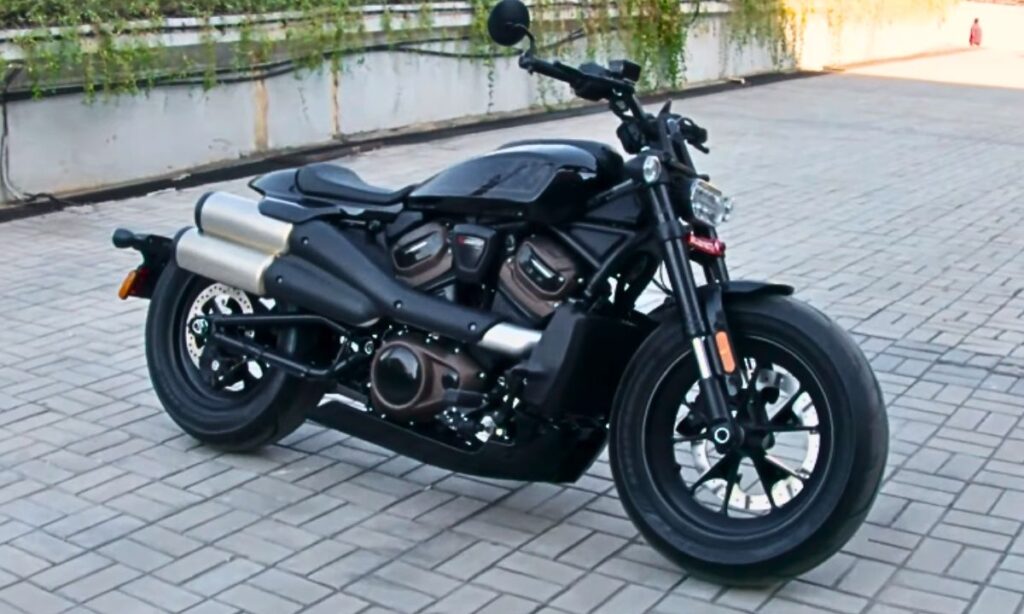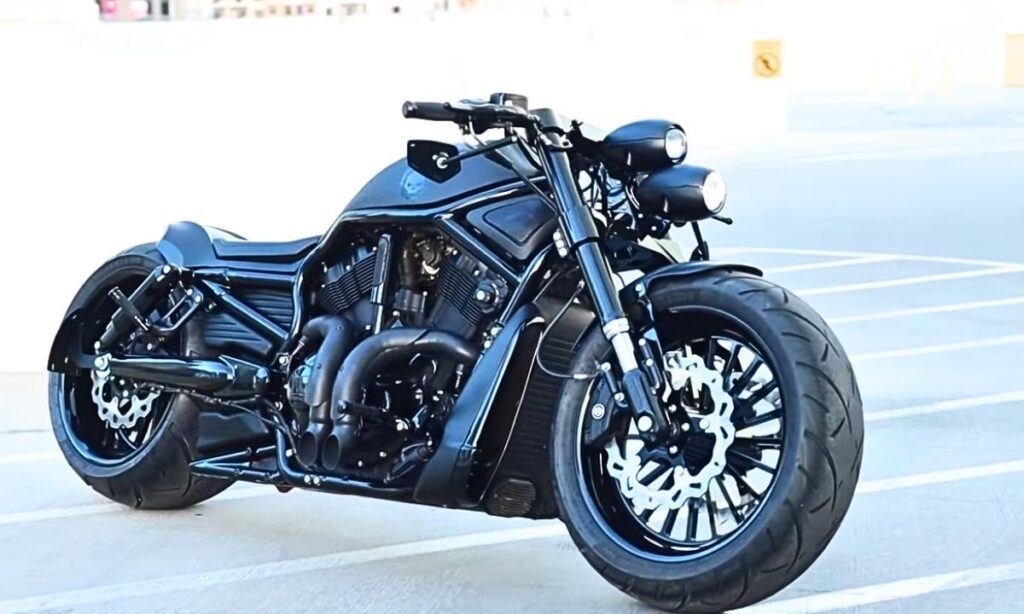If you’re a Harley owner and looking for the Harley wheel interchange chart for your Harley motorcycle.
Then you come to the right place, and we will dive into the interchangeable wheel chart for every Harley model.
By utilizing this chart, you can ensure the best possible fit for your Harley, enhancing the ride quality and the aesthetic appeal of your motorcycle.
Why Do You Need Harley Wheel Interchange Chart

A Harley wheel interchange chart is a critical tool for every Harley Davidson motorcycle owner or mechanic.
It provides essential information on the compatibility of different wheel sizes with various Harley Davidson models.
Understanding this compatibility is vital when you’re considering upgrading your wheels, replacing worn-out ones, or simply customizing your motorcycle.
By using a Harley wheel interchange chart, you can ensure you select wheels that will fit and function optimally with your particular Harley Davidson bike.
This not only protects your investment but also ensures safety and performance while riding.
Harley Wheel Interchange Chart
This chart is instrumental if you’re looking to replace or upgrade wheels, as it ensures proper fit and safe operation.
By referencing the chart, you can easily determine which wheels are interchangeable among various motorcycle models.
Here is the chart:
| Harley Model/Year | Front Wheel Interchangeability | Rear Wheel Interchangeability |
| Road King, Electra Glide, Road Glide (2000-2003) | Rim- 16×3; Tire size– 130/90-16 | Rim– 16×3; Tire size- 130/90-16 |
| Road King (2014–2019) | Rim–17×3; Tire size– 130/80-17 | Rim-16×5; Tire size– 180/65-16 |
| Blackline (2011-2013) | Rim–21×2.15; Tire size–80/90-21 | Rim-16×3; Tire size–140/85-16 |
Things That Affect Wheel Interchangeability On Harley
There are several factors that influence wheel interchangeability on Harley motorcycles.
Here are some of the things that affect the interchangeability of wheels.
1. Wheel Size
Wheel size is a critical factor in wheel interchangeability. It affects the bike’s handling, ride comfort, and overall performance.
A larger wheel size may improve the motorcycle’s highway stability but might make low-speed steering more challenging.
Conversely, a smaller wheel size might offer better maneuverability at lower speeds but less stability on highways.
It’s essential to understand that changing the wheel size is not a simple swap and might require modifications to the brake system, suspension, or even the bike’s frame to ensure proper fit and safe operation.
2. Bolt Pattern
The bolt pattern on wheels is a critical factor affecting their interchangeability.
A bolt pattern, also known as a bolt circle, is the diameter of an imaginary circle that passes through the center of the wheel’s lug holes or bolt holes.
It is usually measured in millimeters and is essential to ensure the wheel fits securely onto the axle hub.
Harley wheels can have different bolt patterns, and using a wheel with an incompatible bolt pattern could lead to issues with fitting and stability.
Therefore, it’s crucial to ensure the bolt pattern of the new wheel matches that of the original for a successful wheel interchange.
3. Axle Sizes
Axle sizes significantly influence wheel interchangeability on motorcycles.
Harley motorcycles have seen a variety of axle sizes over the years, starting with 1/2-inch to 11/16-inch axles in the early models, progressing to 3/4-inch axles, and then to 1-inch and 25mm axles in more recent models.
The axle size needs to match the wheel’s hub for proper installation and safe operation.
Therefore, a wheel won’t fit correctly if the axle size isn’t compatible with the wheel’s hub.
What Issues May Arise While Interchanging The Wheels On Harley?
There are a few potential issues that can arise when interchanging the wheels on a Harley-Davidson motorcycle.
Here are some of the issues that can arise while interchanging wheels.
1. Alignment Issues
When changing wheels on a Harley, one common issue that might arise is alignment problems. Proper wheel alignment is crucial to the optimal performance and safety of the motorcycle.
Misalignment can result in irregular tire wear, poor handling, and decreased stability, particularly when cornering.
Moreover, it can also lead to uncomfortable riding due to the constant need to correct the bike’s direction.
It’s essential to use appropriate tools and follow the manufacturer’s guidelines to ensure precise alignment.
2. Wheel Design Upgrades
When considering wheel design upgrades for a Harley, several factors come into play. One of the common issues that riders may encounter is a discrepancy in fit.
Not all wheel designs are universal, and some may not correspond perfectly with the existing Harley setup.
This could lead to stability issues, impacting the overall riding experience and affecting the motorcycle’s handling. A different wheel design may alter the bike’s balance, affecting how it turns and maneuvers.
Lastly, upgrading to a larger or heavier wheel design can impact the bike’s acceleration and braking performance.
How can you interchange wheels on your Harley?
Interchanging the wheels on your Harley Davidson motorcycle can be a rewarding and cost-effective task if you have the right tools and guidance.
1. Gather Necessary Tools
Before you start, ensure you have the necessary tools: a motorcycle jack, a socket set, a torque wrench, and a new set of wheels that are compatible with your Harley model.
2. Lift the Bike
Use the motorcycle jack to lift your Harley off the ground. Ensure it is stable before proceeding.
3. Remove The Axle
Now, locate the axle that holds the wheel in place. Use your socket set to loosen and remove the axle nut, then pull the axle out.
4. Detach The Wheel
Once you’ve removed the axle, the wheel should slide out easily. Take note of any spacers that may come out with the wheel; you’ll need to replace these in the same order when you install the new wheel.
5. Attach The New Wheel
Slide the new wheel into place, taking care to replace any spacers in the correct order. Then, reinsert the axle and tighten the axle nut using your hands.
6. Secure the Axle
With the new wheel in place, use your torque wrench to secure the axle nut according to your Harley model’s specific torque specifications.
7. Lower the Motorcycle
Finally, carefully lower your motorcycle using the jack, and then take a test ride to ensure everything is set properly.
If you suspect any loose axles or nuts, then again, lift your bike and fix the issue.
What Size Is a Harley Front Wheel?
The size of a Harley Davidson’s front wheel largely depends on the model of the motorcycle. Typically, the wheel sizes range from around 16 inches to 21 inches.
The Street Glide and Road King models, for instance, come with 18-inch front wheels, while the Softail Slim model has a 16-inch front wheel. On the other hand, the Breakout model boasts a larger 21-inch front wheel.
What Size Are Harley Tyres?
Harley-Davidson motorcycles typically utilize a range of tire sizes depending on the model.
For example, the Harley-Davidson Sportster 1200 Custom employs a front tire size of 130/90B16 73H and a rear tire size of 150/80B16 77H.
Conversely, the Harley-Davidson Street Glide Special uses a front tire size of 130/60B19 61H and a rear tire size of 180/55B18 80H.
What Size Wheels Are On a 2007 Harley Davidson Fatboy?
The 2007 Harley Davidson Fatboy is equipped with a 17-inch front wheel and a 17-inch rear wheel.
This standard sizing for front and rear wheels provides the bike with a balanced and smooth ride, ensuring optimal performance on various terrains.


Talha Younas, the brains behind the influential motorcycle-focused website, TwoWheller.com, is a dedicated and passionate advocate for biking culture. Born and raised in a family of motorcycle enthusiasts, his love for two-wheeled transportation was ignited at an early age. His commitment to providing in-depth reviews and helpful tips for riders has established him as a respected figure in the motorcycle community.


